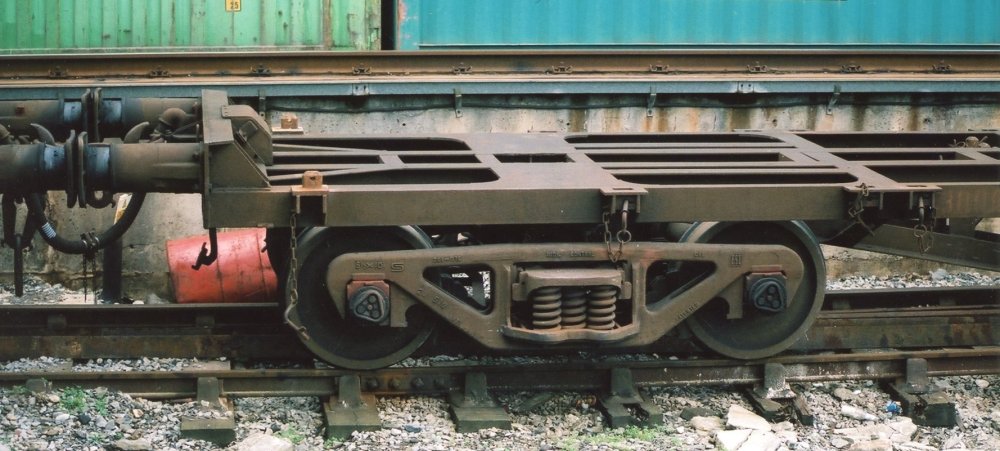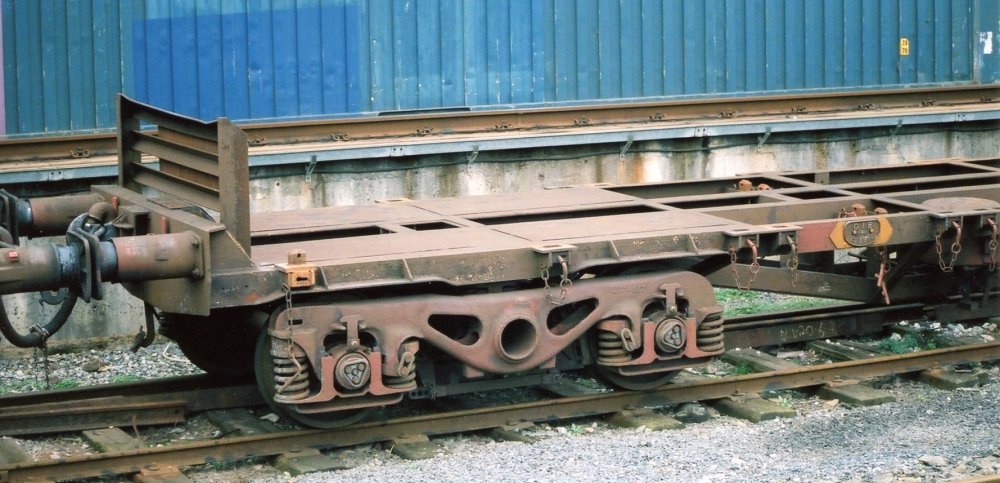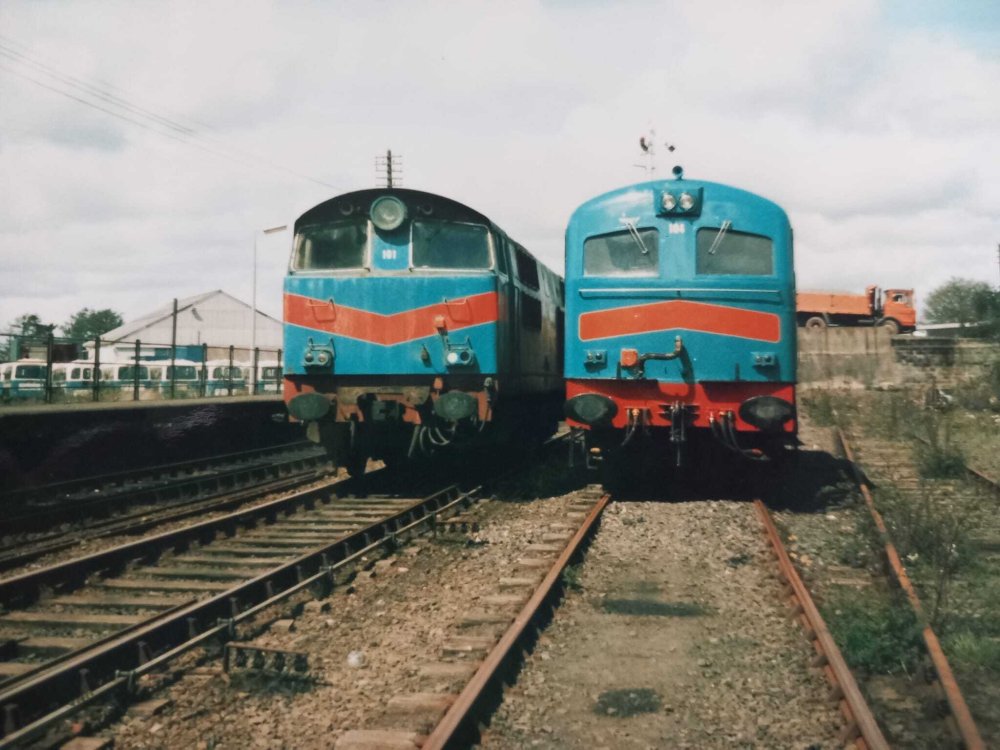-
Posts
507 -
Joined
-
Last visited
Content Type
Profiles
Forums
Resource Library
Events
Gallery
Blogs
Store
Community Map
Posts posted by Ironroad
-
-
3 hours ago, GSR 800 said:
payment due in september
Some inconsistency in that, I've already been asked for payment, and paid
-
2 hours ago, jhb171achill said:
"Cross Ley"? Actually sounds English. Anyone know where this is / was?
Delving a little deeper on Google reveals that Cross Ley is probably not a geographical location. Ley lines are a concept connecting ancient burial mounds. There is a Ley line in Ireland connecting such sites running from Sligo to Dublin.
-
 1
1
-
-
55 minutes ago, MOGUL said:
Hi Tom,
While it sounds in principal like a logical idea, the reality is our warehouse staff are there to pick and pack orders and wouldn't be privy to the ins and outs of US customs to select the best option for the customers. I have over 10 years experience of customs clearances but the rate of change in the US system at the moment is so rapid it's hard to keep up with all the rates, rules and dates without it consuming a few hours of my week. Trump annoucing something, and that information actually being translated into something that a customs broker can implement are two very different things.
So as I said, for now the best we can offer is that the customer can review the rules for themselves, and contact us to have us ship there order with whichever carrier would be the most cost effective for them.
OK, but for the record the current arrangements will stand until at least Aug 12 and a lot of businesses in the US are depending on that. I won't debate the point any further but suffice it to say that I think that communication with every customer on each and every shipment is pretty onerous and even then it is still the pick and pack person that must get it right based on the paperwork in front of them. In either scenario they are not required to understand the tariffs.
-
 2
2
-
-
41 minutes ago, BosKonay said:
Didn’t Trump remove De Minimis for Chinese goods? So tariffs apply from $1 of value now.
Yes he did, but please read the CNN news extracts I posted earlier which explain what is in place for at least the next 85 days or so.
All shipments sent via commercial carriers will have a tariff of 30% applied.
All shipments sent via the post office with a value of $1 up to $800 will be subject to a 54% tariff, but with a option for the consignee to pay a flat tariff of $100.
So if IRM/AS are offering their US customers a choice between having orders shipped by mail or courier a simple rule of thumb can be applied to minimise the tariff being paid by US customers.
It makes no sense to send an order with a value of $334 or less via the mail, because the minimum tariff such a order would be subject to would be $100, whereas the maximum tariff sent via courier (@30%) would be $100.
And It makes no sense to send an order valued between $335 and $800 via a courier because it would incur a tariff of between $101 & $240. Whereas sending that same order via the mail incurs a maximum tariff of $100.
So the simple rule of thumb is to send all orders valued between $335 and $800 via the mail and all others via courier.
-
 1
1
-
-
2 hours ago, Mayner said:
I suppose the $20million question is whether The US Custom Service and US Postal Service are geared up (have the resources) to collect the newly introduced tarriffs and the ability to respond to respond to potentially rapidly changing tariff rates.
While EU custom and postal services had several years to prepare (investment in automation) for changes in Global Customs Declaration Requirements & EU Vat Harmonisition, a lot of frustration was expressed on this Board as a result of 'teething problem" with An Post's systems and people having to pay Vat on imports from outside the EU.
Although increased tarriff on imports was one of Donald Trumps significant campaign strategies, it appears highly unlikely that Customs or the Postal Service wpuld have been able to justify gearing up to collect the new Tariffs without Presidential approval.
From my own experience as an exporter the cheapest option using a Postal Service or a Courier like DHL was for the customer to pay the import tax/duty and customs clearance upon arrival, DDTP with a carrier like DHL or Fed-Ex was a significantly more expensive option.
The other issue with shipping to the United States is that DHL uses a 'local partner" usually USPS for delivery in the United States which in my experience can result in unpredictable delivery.
I shipped an important document from New Zealand to the United States in January, while DHL managed to complete the international element of the shipping (Auckland-LA-Minnespolis) within 3 days it took a further 5 days for the USPS to deliver the document the remaining 195 miles to its destination. There was also the little matter of the USPS delivering the document to the local Post Office than the actual delivery address.
I guess the only way to find out how long the customs clearance process will actually take and work out the most cost effective shipment option is for one of our US based forum members to place an order with Accurascale.
Hi John, I have my doubts as to whether US Customs or the USPS are in any position to manage the scale of the task that has been dumped on them nor do I think the man in the White House cares. For him it's about optics not practicalities. So I do expect some compromises will be made in the application of these rules. But In the meantime we need to be prepared which is why I'm suggesting a simple rule of thumb to IRM/AS.
As to DHL deliveries in the US I'm surprised by what you say because any I've received (including from you) have been delivered by DHL itself and not outsourced to the USPS and the delivery times have been excellent. But perhaps they need to outsource in some instances depending on the destination and their own capabilities regionally. For sure the USPS are slower than the courier services internally but they are not too far behind the couriers when it come to international parcels, at least in my experience.
-
3 hours ago, MOGUL said:
Obviously, as you eluded to, offering a better range of carriers is only part of the solution for our US customers..
But unfortunatley there is no "easy" way to do what you have suggested and have our system automatically calculate what the tarriff would be if you select carrier A or carrier B. I would like to think that there may be an app developer out there building just such a plug in for our software, but it is still very early days on the whole, so they may not have made much progress as yet! It is also very much be a case of trying to hit a moving target, with the tarriffs and the rate of exchange between the dollar and our base currency of GBP being in a constant state of flux. The best option I'm afraid will be for customers to get in touch with us over support shortly before we have a product arrival(for pre-orders), or if they want to place an order(for in stock items obviously) and request which carrier from our available list they would like their parcel to be sent with.
I fully appreciate the impracticality of modifying your software but that's not what I was suggesting. In practical terms I'm suggesting that at the point of picking and dispatching orders to the US that the decision as to how to ship them is determined by the value in USD.
IE Shipments valued between $335 and $800 go via the mail and all others go via courier.
As to the currency question it has been made very clear to me that all orders with an US delivery address are valued by default in USD by Shopify at the point of placing an order, so that question is already addressed at the point of pick and dispatch.
As to testing this, I'm willing to be the guinea pig. So assuming shipment of my Park Royal order worth $700 for which you requested payment last week is imminent, please send that order via the mail and let's see how it plays out.
Thank you Tom
-
 1
1
-
-
2 hours ago, James Regan said:
As Andrew noted above, they are working on royal mail as an option. The optimal approach would be to order in no more than $799 tranches, assuming we can opt for the $100 flat fee, each time. I’m not totally clear on how USPS will facilitate that, at this point. I’ve seen various views on their ability to process.
That would work. I can deal with 12-15%
2 hours ago, DJ Dangerous said:
It sounds like A/S are working on having various shipping options available:
I assume that, if DDP were a viable option, you’d need to be choosing between the $100 USD flat fee and the 54% and the 30% at the time you place your order.I was drafting the question I've posed as Andrew posted his comment on offering a choice of shipping options and I appreciate the merits of that. However, that choice is going to be determined by a formula so why not simply apply that formula.
The option to pay a flat tariff of $100 on shipments via the mail with a value of $800 or less, coupled with the option of paying a 30% tariff on shipments via couriers seems to make the concept of a 54% tariff irrelevant
The only circumstance in which customer might be inclined to accept paying a 54% tariff is on parcel sent via the mail with a value of $185 or less. At $185 the 54% tariff is $99.90. But if there is an option to receive that same parcel via a courier the tariff would be 30% or $55.50 and logically the customer would take this option.. (a potential difference in mail versus courier costs may also have a bearing ).
So it comes down to establishing the point where the customer suffers the least pain in deciding whether to ship via the mail service or via a courier and that point is $335, IE at and below this it makes sense to ship via a courier service and above this point up to $800 it makes sense to ship via the mail service.
So yes James, orders need to be in increments under $800 in value which I suspect most are and using this formula, you would pay 30% on any order valued $335 or less, and anything from 30% down to 12.5% on orders between $335 and $800 in value (ironically this provides an incentive for orders on the high end of this scale).
But it is a question for IRM/AS as to whether they can facilitate this.
By the way I think we have to assume at this stage that both US Customs and the US Postal Service have had sufficient opportunity to contemplate how this will all work. Nonetheless considering the daily volume of two million parcels they may be forced into some compromises perhaps with them being more focused on shipments directly from China, we shall see.
-
Can we pause the academic debate on what may or may not be and concentrate on a question that is pertinent to the situation as it stands right now.
These are extracts from a CNN news article;-
The Trump administration has cut its tariff on “de minimis” packages, or shipments of goods worth $800 or less, coming in from China from 120% to 54% and slashed the rate from 145% to 30% for packages from commercial carriers. A $100 flat-fee option also won’t surge to $200 per postal item come June 1, as was previously planned, according to an executive order issued Monday and which goes into effect after midnight on Wednesday.
Monday’s executive order eases the 120% tariff on de minimis postal packages down. The new 54% rate only applies to shipments handled by postal services such as USPS. Deliveries from UPS, FedEx and other express courier companies will instead face the baseline tariff on Chinese goods, which the US lowered to 30%, still crippling for many businesses and consumers.
So an order containing goods manufactured in China coming via the mail with a value less than $800 appears to be subject to a tariff of 54%, with an option to pay a flat tariff of $100.
On the other hand the same order shipped via a courier (DHL Fedex) etc. is subject to a 30% tariff.
The logic of 54% on mailed parcels seems to be designed to target sellers such as TEMU and to push consumers towards the flat $100 option. But that option is also an indication that US Customs don't have the capacity to process the daily through put of two million parcels in this category and are looking for a simple pass through with responsibility for collection resting with the Post Office.(whether the PO can handle this remains to be seen). At the same time there seems to be an assumption that the commercial operators such as DHL already have the capacity to collect the tariff of 30% on small parcels as they normally would on everything else.
Regardless of the logic behind these decisions, from my perspective as a customer in the US it seems to me that it would be preferable to have any order with a value in excess of $335 but less than $800 sent via the mail and any order with a value less than $335 sent via courier. Meaning the maximum payable by me on any parcel with a value less than $800 would be $100.
So my question is can IRM/Accurascale facilitate this, without the need for separate conversations with each customer on every shipment, for at least for the next 88 days, when things are likely to change again. Thank you
-
 1
1
-
-
7 hours ago, ttc0169 said:
Maximum train consist was six-five MK3 push pull coaches and the EGV,
The control car/DVT wasn’t part of the formation,
Maximum speed was 90 mph-see above photo,bottom of the notice.
As push pulls in suburban service I believe the speed limit was 70 mph. When displaced and used more widely with upgraded bogies as push pulls the speed limit was 90 mph hauled and 70 mph pushed. Maximum number of coaches in push pull formation was six, probably capped by generator capacity.
I was previously unaware that the MK3 push pull coaches with the hopper windows were later used as hauled stock with a generator van. It means all the more possibilities for use of the long promised Murphy Models release of these coaches.
Video of a push pull set with intercity branding and a generator van being hauled by 087 at Connolly July 2007
-
 2
2
-
 2
2
-
-
On 7/4/2025 at 8:26 AM, josh_ said:
Personally would love to pair it with silverfox push-pull
Hi Josh, something you may wish to consider. To my recollection the Mk 3 coaches used on the outer suburban push pull services in Dublin, did not have sealed window units as per these Lima models. These push pull trains didn't run with generator vans and depended on a smaller generator in the driving trailer (underfloor) and accordingly did not have air conditioning. These trains were also operated at least initially with 121 class locos.
-
 2
2
-
 2
2
-
 1
1
-
-
3 hours ago, Mayner said:
Academically your Tutor Examiners are likely to be more interested in your research methods and how you arrived at your conclusions than the accuracy of the data present or project findings.
This is probably true but what piqued me was the "check the box" comment.
-
If you can't do it right then don't do it at all. Writing drivel makes no sense no matter who the audience is, have some respect.
-
 2
2
-
-
13 hours ago, Mayner said:
. Its possible US Customs simply may not have the capability (staff or technology) to process low value parcels following the change in policy.
The Irish Customs/An Post and most other countries spent two/three years preparing to implement the 2023 changes to Global Customs Clearance requirements.
Yes, to put this in perspective, the number of parcels with a value of less than $800 arriving annually in the US is estimated to be more than a Billion. So the level of chaos that now exists in the clearing centres may take some time to sort out. and it may be the case that to clear the back log they will be forced to arbitrarily allow some parcels a free pass. That may already be the case for my H van order as it looks like that parcel may have been released earlier this morning but the tanker order is still stuck.
This is not the only instance of chaos in the US in recent weeks as a result of executive orders and some backtracking has been necessary. Pausing shipments to allow things to settle down might be a good idea.
-
As it stands it looks like my order for these tankers and the H vans are stuck with US Customs in New York which is something new and most likely related to the abolition on Feb 5th of the exemption to duties on small parcels under $800. This action is specifically intended to target such parcels either originating in China or containing products made in China. It also looks like the paperwork requirements are more stringent and accordingly I'm expecting both orders will be returned to IRM/AS.
https://www.easyship.com/blog/section-321-de-minimis-changes
-
 1
1
-
-
Also interested in two pairs
-
 1
1
-
-
Given the direction this thread is taking it is worth mentioning that Some of the postings in the thread "We Got a Flat" -Announcing the Bullied & PWD Flat Wagons" are relevant to this conversation for example;
https://igg.org.uk/rail/5-unit/unitload1.htm
Fig ___ Standard closed containers

-
 1
1
-
-
58 minutes ago, Mol_PMB said:
That's interesting. Equally I have seen IRM posts in subsequent years that have declared Project 42 'complete'...
I've ordered some Cambrian bogies and I'm going to have a go at grafting in some IRM wheelsets complete with rotating axle ends.
Yes, I've also seen that, but a rerun with improvements in the future is quite probable and producing and offering Ride Control Bogies as an accessory (in the interim) as preparation for that rerun would make some sense.
-
 1
1
-
-
On 12/1/2025 at 2:08 PM, Mol_PMB said:
Sorry! It's complicated.
IRM didn't actually model the ones with steel floors; I was looking for information to do a conversion to represent that type.
But for the ones without steel floors, there were two main groups:
30001-30090, built 1971-1972. These had Ride Control bogies.
30099-30278, built 1978-1979. These had Sambre et Meuse bogies, and the wagon frame design was modified above the bogies to allow clearance for the larger bogie frame.
The IRM models have the first type of frame and the second type of bogie:
Both batches of wagons were built with round buffers, and 14 spigot brackets each side.
Later, many wagons were modified with rectangular buffers (circa 1990s) and additional spigots for keg cages (circa 2000s). The IRM wagons include these later modifications.
Many thanks, that is very informative and prompted me to check back on the thread covering the announcement of IRM's Project 42. It seems that producing these flats with Ride Control Bogies was on the agenda and hopefully IRM can still be persuaded to produce these as an an accessory for the many of us that might be inclined to replace the Sambre et Meuse bogies. This is the post that caught my attention. https://irishrailwaymodeller.com/topic/7600-project-42-update/page/2/#comment-109425
-
 1
1
-
-
As I've been reading this thread I must admit to being a bit confused by the nuances. Can we clarify which of these flats IRM modelled in their Project 42 ?
-
-
-
Yes, please send me a PM
-
Happy & Sad

-
 6
6
-
-
14 minutes ago, ttc0169 said:
Hi Tom,
Thank you, The BELL liners were easy-I cut out a small section of the floor of each of the containers and blu tacked the battery pack to the floor, then threaded the lamps above the bogies and glued them onto the buffer beam,
The two axle barrier oil wagon was done in a similar manner,
The bogie cement wagon is an MIR kit and again as the tank is hollow-it was only a matter of blu tacking the battery pack on to the inside.
The ammonia barrier-(I’ll take photos over the next few days) was a little more difficult -I had to cut out a section of the tank underneath to accommodate both battery packs-they sit on the wagon chassis and are covered by the tank-it works…!!
The fertiliser wagon would need some holes drilled in the base in order for the lamps to be pushed through-the battery packs can then be covered by a pallet of fertiliser
I am using the magnetic wand supplied with the Mk2 coaches-but unfortunately in the case of the BELL liners it doesn’t work with the containers covering the battery pack -so they have to be removed each time the lights need to be switched on, bear in mind each battery pack needs two LR41 batteries to work the lamp,
I don’t think they will be suitable for passenger trains-simply because the wand won’t be able to switch the lights on through the roof-however I will attempt to put a set in the EGV of the Mk2 a/bs and see how I get on
And yes -I was unable to find that support page on the website
@DJ Dangerous-there isn’t much room on the chassis underneath to fit the battery packs without major surgery which I won’t be doing on that fine model.
Thanks for that Noel, very informative.
My immediate thought as regards the problem with the units fitted inside the Bell Containers is that perhaps it's a matter of distance and maybe a stronger magnet (creating your own wand with say a neodymium magnet), may work or perhaps simply attaching the battery/control units directly under the roof of the container, (access to do this is fairly easy because the floors pop out).
As for coaches, as an example I currently have a Craven Buffet in a dismantled state, and the units will fit inside the toilet compartments, so I would expect switching with the wand should be possible by passing it over the exterior side of those compartments (albeit you have to swipe both sides).
Seems like I will be needing quite a few of these tail lights.
-
 1
1
-
.png.c363cdf5c3fb7955cd92a55eb6dbbae0.png)






Gauge of interest: GSWR 400 class
in Irish Models
Posted
I think you missed me. I confirmed an interest with Killian last Dec and have a D16 waiting.